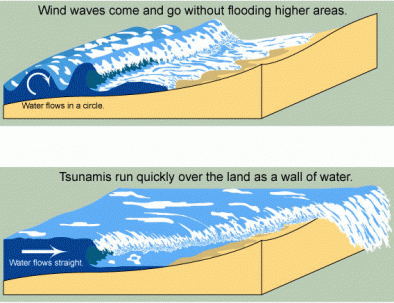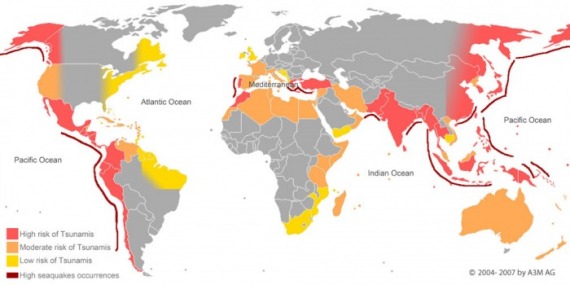What is a tsunami?
A tsunami is a large ocean wave usually caused by an underwater earthquake or a volcanic explosion. Tsunamis are NOT tidal waves. Tidal waves are caused by the forces of the moon, sun, and planets upon the tides, as well as the wind as it moves over the water. With typical waves, water flows in circles, but with a tsunami, water flows straight. This is why tsunamis cause so much damage!
The common causes of Tsunamis

The most common causes of tsunamis are volcanoes, earthquakes and earth slides - mostly undersea.
Volcanoes that have been erupting continuously for a long time have empty magma chambers. The roof then collapses forming a crater sometimes up to one kilometre in diameter. Water gushes into this crater in a very short amount of time, causing a tsunami.
Earthquake originated tsunamis occur when portions of the Earth's crust on either side of a fault jolt past each other. For a tsunami to occur however there must be some kind of vertical movement along the fault. This vertical movement must be capable of displacing huge amounts of water, thus causing waves.
Tsunamis can also be caused by land sliding in to the sea with such great force that it creates a wave.
Where do tsunamis occur?
Most tsunamis occur in the Pacific Ocean as it is located on a plate mostly made of water. The Pacific Ocean is also surrounded by the Ring of Fire, a highly active volcano and earthquake zone. The Ring of Fire circles the ocean from Alaska down to the west coasts of North and South America and up along the east coast of Asia, taking in parts of China, Japan and Russia. Tsunamis can only occur in coastal regions; islands are the main targets.



